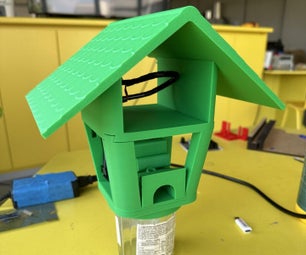Introduction: Electronic Component Lead Bending Tool
When assembling a circuit it is pretty common to hook up a resistor or other component to span a distance on your board. This is true with PCB builds, but especially with perfboards. In order to get a clean, well built looking final product it is important to size the leads for these resistors so that they fit flush with the board and do not have excess lead slack. This can a tricky to do by hand and can easily lead to kinked up leads. Instead you can make one of the simple lean bending tools and make the bends perfect every time!
Step 1: Mark Your Piece of Perfboard
Get a piece of scrap perfboard, stripboard, or whatever. All that matters is that the board be drilled with the normal 0.1" spaced holes. Take a marker and put a dot on the holes you plan to use. I suggest a slope of 1/3 as I have shown here. In other words, pick the first place you want to measure a resistor, probably 4 or 5 holes, then move over three and up one. Make a mark on that spot and kept moving over 3 and up 1, marking holes, until you reach the longest bend you will ever want to make. Once you have the desired holes marked, connect them with a line.
Step 2: Cut Along the Line and Grind Slots
Take a rotary tool, or whatever you have, and cut the board along the line like I have shown. Since we cut along the line with our desired holes, there should be little grooves at each place where you will bend your resistor. If you have accidentally cut one to close or have a flat edge to one part of your board then you can use a file or rotary tool to grind some deeper slots. In the one I show I have done a little grinding on both sides at each hole mark and used a marker to label the length of each spot.
Step 3: Bend Your Leads and Be Merry
Now that your tool is complete you can start bending components. For a resistor I hold the component in the center of the tool and bend the leads over the edge. When you slip the component off it will fit perfectly into your board.

Participated in the
Epilog Challenge V











